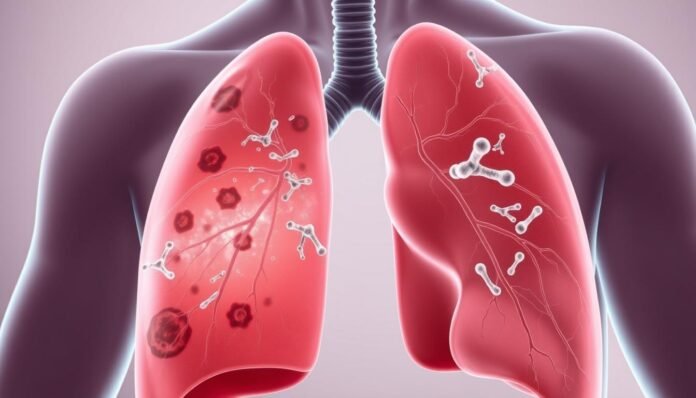Tuberculosis (TB) spreads primarily through the air when an infected person coughs or sneezes. The bacteria, Mycobacterium tuberculosis, travel in tiny droplets, which others inhale. Once inside the body, these bacteria can remain dormant for years or cause active infection. Despite its well-documented airborne transmission, questions about TB spreading through kissing or sexual contact persist.
Doctors confirm that TB does not typically spread through saliva, which makes transmission through kissing highly unlikely. Even though TB bacteria may be present in saliva, they require deep inhalation into the lungs to cause infection. Surface contact with saliva does not provide the right conditions for the bacteria to thrive. However, if an infected person has open sores in the mouth or throat, prolonged exposure to their saliva may pose a slight risk.
Genital TB, a form of extrapulmonary TB, affects the reproductive organs. This condition arises when TB bacteria travel from the lungs to other parts of the body, including the fallopian tubes, uterus, epididymis, or prostate. While genital TB is not directly contagious through sexual contact, it can lead to complications like infertility. Many cases remain undiagnosed because the symptoms mimic other reproductive infections.
Doctors stress that sexual activity itself does not spread TB. The bacteria do not pass through bodily fluids such as semen or vaginal secretions. However, prolonged close contact with an infected person increases the risk of airborne transmission, particularly if the person has active pulmonary TB and is not undergoing treatment. Couples who share a living space face a higher risk of infection if one partner has untreated TB.
TB primarily affects the lungs, but in some cases, it spreads to the mouth, throat, or skin. If lesions develop in these areas, the risk of transmission through direct contact may slightly increase. However, such cases are rare, and standard TB precautions remain the best defense.
Medical experts emphasize that individuals undergoing TB treatment become significantly less contagious within weeks. Proper medication and consistent adherence to prescribed treatments reduce the risk of spreading the infection. Patients diagnosed with TB should avoid close physical contact until their doctor confirms they are no longer contagious.
TB prevention relies on early diagnosis, timely treatment, and proper hygiene. The Bacillus Calmette-Guérin (BCG) vaccine offers protection against severe TB forms, particularly in children. Public health measures, including improved ventilation, wearing masks, and covering the mouth while coughing, help limit transmission.
Doctors advise individuals exposed to TB patients to get tested regularly. Symptoms like a persistent cough, fever, night sweats, and unexplained weight loss warrant medical attention. Early treatment prevents complications and reduces the risk of spreading the infection to others.
Despite concerns, TB remains primarily an airborne disease. The risk of transmission through kissing or sexual contact remains negligible. Maintaining awareness and following medical guidelines ensures better protection against this ancient yet persistent disease.
People with weakened immune systems, such as those with HIV, diabetes, or malnutrition, face a higher risk of developing active TB after exposure. Even if the bacteria enter their bodies, a strong immune system can keep the infection latent for years without causing symptoms. However, in immunocompromised individuals, TB bacteria can multiply rapidly, making them more likely to spread the disease to others.
In crowded living conditions where ventilation is poor, TB transmission becomes a greater concern. Households, dormitories, and correctional facilities create an environment where the bacteria can linger in the air for long periods. This is why public health experts stress the importance of fresh air, sunlight, and hygiene in reducing infection risks. Proper airflow dilutes the concentration of TB bacteria in enclosed spaces, lowering the chances of inhalation.
Some people mistakenly believe that tuberculosis only affects those from lower-income backgrounds or developing nations. However, TB knows no social or economic boundaries. While it is more prevalent in areas with limited healthcare access, anyone can contract the disease. International travel and urban congestion have contributed to its persistence in unexpected regions, making awareness and preventive measures essential worldwide.
Emerging research explores whether TB bacteria can be found in bodily fluids other than saliva, such as tears or sweat. While no strong evidence supports transmission through these fluids, scientists continue to study how the bacteria behave in different environments. These findings may help develop better diagnostic tools and treatment approaches in the future.
Although medical advances have improved TB treatment, drug-resistant strains pose a growing challenge. Patients who do not complete their full course of antibiotics risk developing multidrug-resistant TB (MDR-TB), which is harder to treat and more expensive to manage. This makes adherence to prescribed medications critical, not just for the individual but for preventing the spread of stronger, more resilient bacterial strains.

